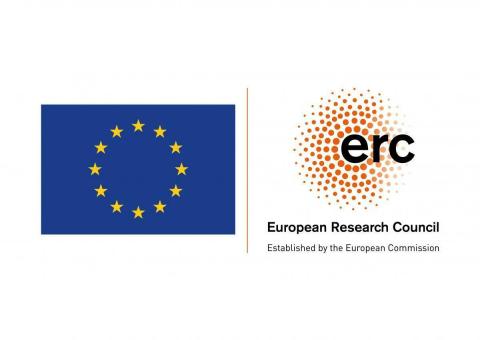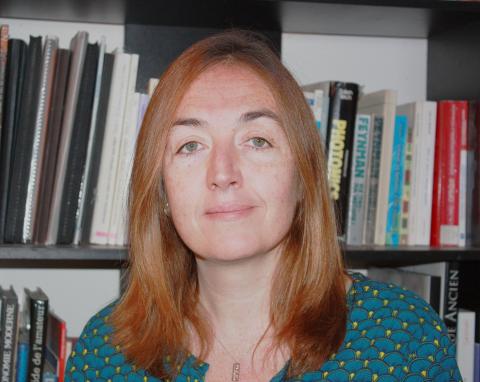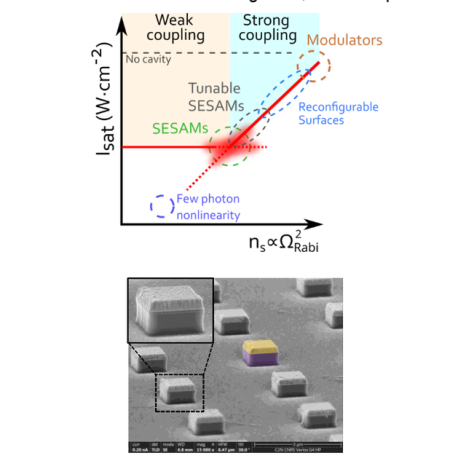
ERC 2022: two laureates from Université Paris-Saclay selected from the reserve lists
The European Research Council (ERC) has just published the final list of researchers offered funding through ERC grant programmes, as funding has recently become available for researchers on the reserve lists. Two researchers from Université Paris-Saclay’s community are among those on the final lists: Sandrine Lévêque-Fort and Raffaele Colombelli.
Sandrine Lévêque-Fort
Sandrine Lévêque-Fort is a CNRS research director at the Orsay Institute for Molecular Sciences (ISMO – Univ. Paris-Saclay/CNRS). She has been awarded an Advanced ERC grant for her project TimeNanoLive, which began on 1 November 2023.
Chief Scientific Officer and co-founder of the start-up, Abbelight, which develops fluorescence optical microscopy instruments for biological research, Sandrine Lévêque-Fort was awarded the 2020 Irène Joliot-Curie prize in the “Women, research and business” category.
Her winning project, TimeNanoLive for Time-based single molecule nanolocalization for live cell imaging, explores the development of super-resolution optical microscopy, a technique which aims to accurately reproduce the three-dimensional structure of proteins in cells and tissues. While current approaches based on the localisation of individual fluorescent molecules allow for observations on the nanometre scale, the current localisation process of these molecules, which is based on the analysis of a large number of acquired images, is slow and often limited to the observation of non-living cells. TimeNanoLive aims to revolutionise localisation by using a specific structured illumination to encode the 3D position of fluorescent molecules with increased spatial and temporal resolution.
This approach shifts the localisation step to illumination, meaning that the detection strategy can be redesigned. Conventional cameras are replaced by new detectors, providing faster acquisition and new information about the environment of fluorescent molecules. The observation of living cells in real-time and on the nanometre scale will give insights into the temporal evolution or intracellular structures and their functions, paving the way for a better understanding of various diseases.

Raffaele Colombelli
Raffaele Colombelli is a CNRS research director at the Centre for Nanoscience and Nanotechnology (C2N – Univ. Paris-Saclay/CNRS/Univ. Paris-Cité). He has been awarded an Advanced ERC grant for his project SMART-QDEV.
His winning project, Ultra-fast non-linear quantum semiconductor devices in the strong light-matter coupling regime, or SMART-QEV, focuses on quantum semiconductor devices in the mid-infrared spectral range. Quantum-confined electronic semiconductor systems operating in the strong light-matter coupling regime acquire radically new optical non-linear properties. SMART-QDEV will leverage this to demonstrate a new class of semiconductor devices with engineered ultra-fast non-linear functionalities.
The project, to be launched in September 2024, will target the mid-infrared spectral range since this range is composed of gases that exhibit characteristic spectral absorption lines. The first core objective is to develop compact and practical mode-locked sources and frequency combs, which are currently missing in this region of the spectrum. In particular, ultra-fast semiconductor saturable absorption mirrors (SESAM) will be demonstrated over the whole mid-infrared spectral range. SESAMs have revolutionised ultra-fast lasers in the near-infrared, but have not been available as yet at longer wavelengths. This development will then be applied to interband cascade lasers and fiber lasers, leading to radical advances for laser comb technology.
The second thrust of the project will dive into fundamental physics: we will study the limit of few-photon nonlinearities, down to the ultimate case of devices that can “sense” virtual photons. The ultimate goal is to develop devices whose operation is affected by vacuum-field photons, a purely quantum electro-dynamical effect, developing a new concept of proximity sensor based on cavity electrodynamics.
Figure 1 - Bottom: cavity architecture for exploiting non-linearities in the strong coupling regime: active QWs (pink) embedded in highly confining metal cavities (yellow).
Top: Tailorable saturation intensity as a function of the light-matter coupling strength, and potential devices for the different regimes.


